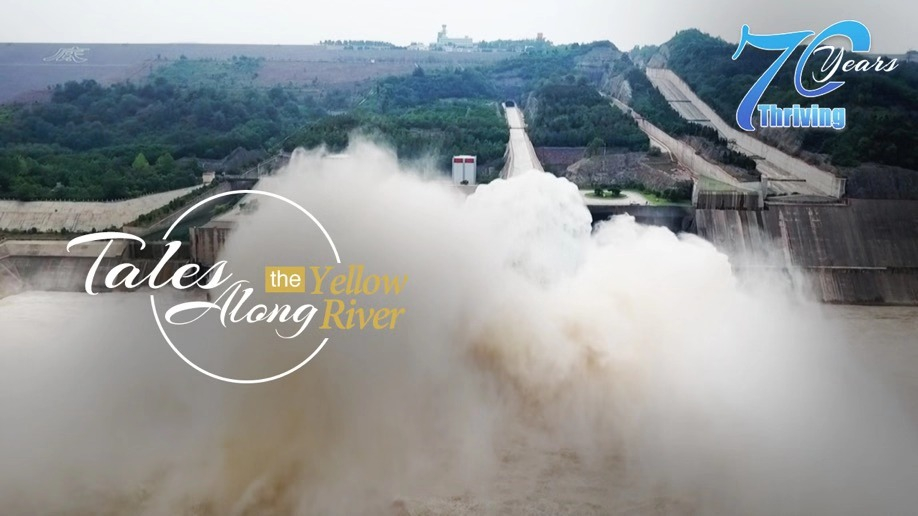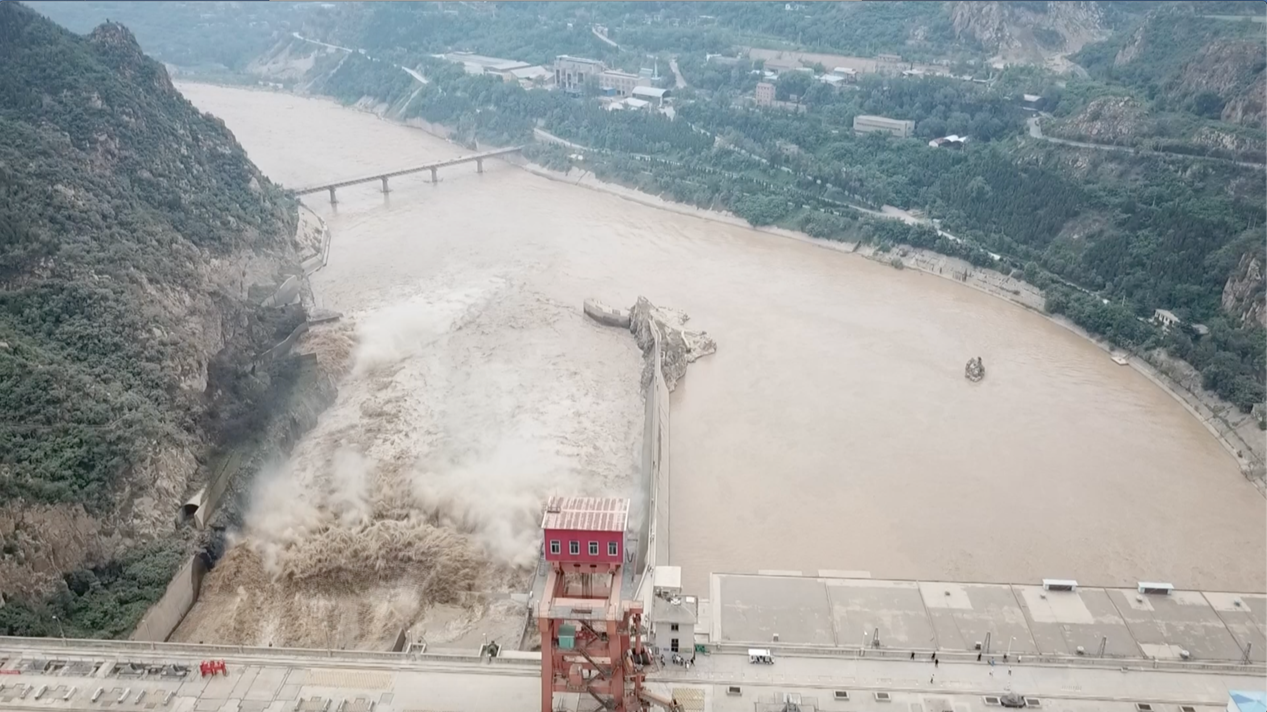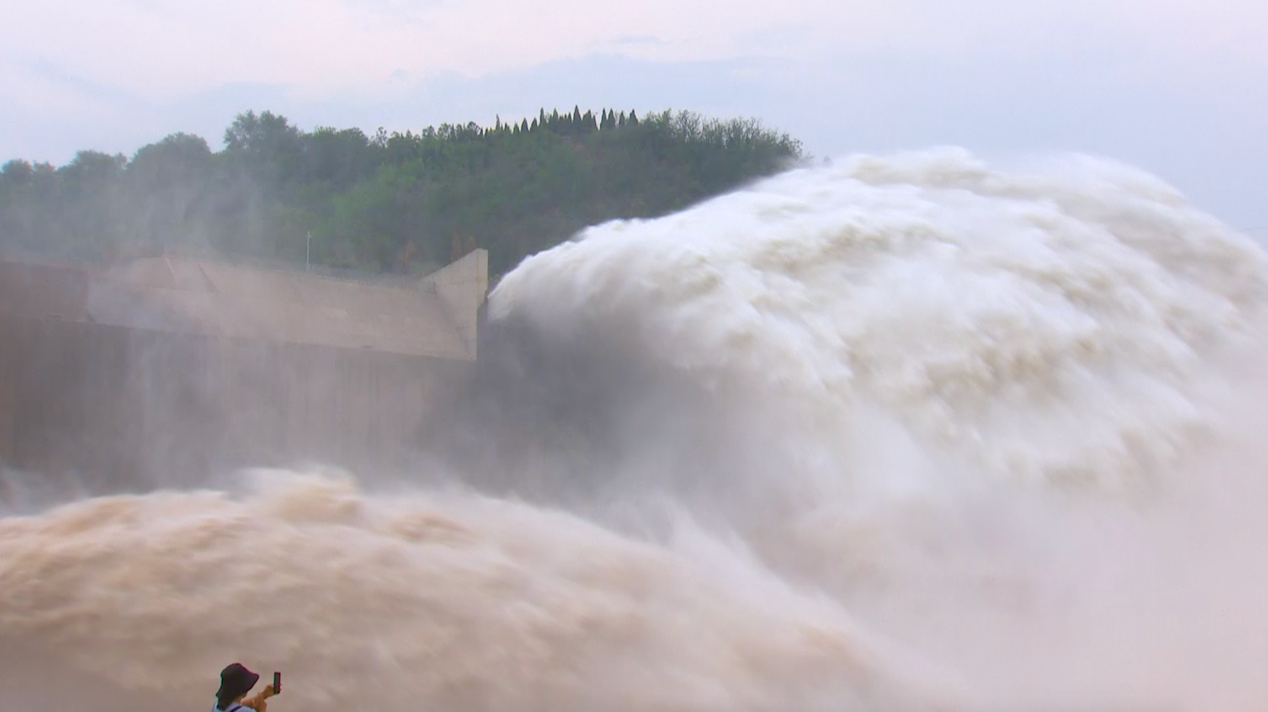

The Sanmenxia Dam on the Yellow River was the first of its kind. It was constructed to prevent midstream sediments from flushing downwards, but it incurred problems over the years.
Unlike many other river dams in the world, the dam facilities on the Yellow River had to consider thick, heavy sediment.
Passed through the Loess Plateau, the river carried mud and sand downstream. Sediment deposits had long been an obstacle, but the situation got better.
“The environment has changed a lot here. In the past, the Yellow River was very muddy, even outside the flood season. Now it's clearer. And the riverbed from the upstream no longer rises,” said Hu Shujun, a facility engineer at Sanmenxia Dam.

The Sanmenxia Dam is working on a project to remove sludge in front of dike. / CGTN Photo
The dam was put into use in the 1960s to solve issues like river bursting and division. Shortly after it successfully reduced downstream flooding, new problems arose upstream. Vast amounts of sand blocked the dam hole and raised the riverbed.
“Back then, Sanmenxia's builders overestimated the effect that the dam could have on soil and water conservation. The dam was originally designed to keep the thick water in a reservoir to dissipate the sand and then drain the clear water. But the deposits threatened the upper-stream plain,” said Zhao Xianrong, a researcher at Yellow River Conservancy Commission’s Disaster Prevention Department.
“So, we changed our strategy, to release the river water with sand all together in a designated period of time,” Zhao said.
Therefore, Sanmenxia turned to a hydroelectric dam. And the task of sand control was assigned to a brand-new dam located 130 kilometers down the river, the Xiaolangdi Dam.

Water release at Xiaolangdi Dam during flood season has become a scene. / CGTN Photo
For 20 years, tourists have flocked to this site to see the water being released from the Xiaolangdi Reservoir.
The reservoirs at the Yellow River's dams also played a key role in water distribution.
The river's downstream areas, Henan and Shandong, were two densely populated provinces. Together, they used up about 30 percent of the water resources. But the majority of the source water came from upstream.
Therefore, a coordinated cross-provincial water distribution system was needed.
“The water conservancy project can help us reserve the river water from the rainy years and use it for supply in the drought years, to improve the utilization of resources,” said Ke Sujuan, Director at Yellow River Conservancy Commission’s Water Distribution Office.
The dam and reservoir facilities also helped to preserve the regional ecosystems, as water control prevented the drying up of the great river.
(Zhang Youze also contributed to this story)

Copyright © 2018 CGTN. Beijing ICP prepared NO.16065310-3
Copyright © 2018 CGTN. Beijing ICP prepared NO.16065310-3